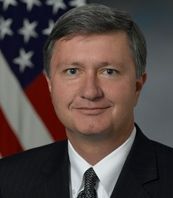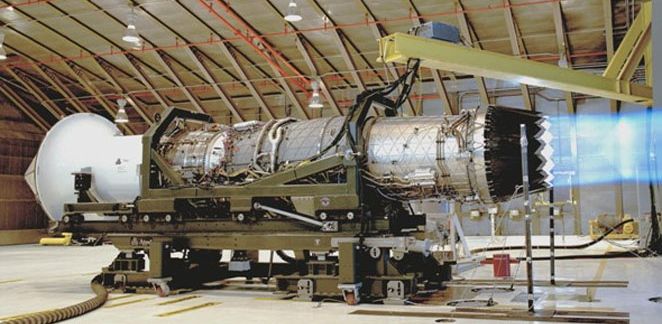We Haven’t Won Yet on Export Control Reforms
Posted on
Bill Greenwalt worked for almost a decade as the professional aide in charge of arms export policies at the Senate Armed Services Committee. Under the Bush administration he took the lead on industrial base issues as deputy undersecretary of defense for industrial policy. Now Bill has moved to a gig where he can speak a bit more freely, at the American Enterprise Institute. This is the first of an occasional series he plans to write on acquisition issues for Breaking Defense. The Editor.
 The defense industry is hard-pressed for good news these days after budget cuts, sequestration and the government shutdown. But there is one bright spot. The industry received some good news last month when new export control reforms went into effect. The reforms involved transferring authority for key categories of arms exports, including military aircraft parts and engines, from the State Department to the Department of Commerce.
The defense industry is hard-pressed for good news these days after budget cuts, sequestration and the government shutdown. But there is one bright spot. The industry received some good news last month when new export control reforms went into effect. The reforms involved transferring authority for key categories of arms exports, including military aircraft parts and engines, from the State Department to the Department of Commerce.
The move from State to Commerce means that companies wishing to sell these parts will face fewer burdensome regulations, helping to sustain exports and providing needed relief for America’s defense industrial base. But, as helpful as this change has been, the most important item on the export control reform agenda will be less about the ability of US defense firms to sell abroad than whether the US military has access to cutting edge technology from commercial firms who are not normally considered a part of the defense industrial base.
Export control reform will continue to be a critical national security issue because of changes in global research and development. In the past, the federal government dominated global R&D spending so strict export controls were created to protect this dominance.
Today, American R&D is predominately funded by the commercial market, one that is increasingly globalized. As commercial products and services become cheaper, more reliable and more advanced than their military equivalents, future military dominance will accrue from leveraging this commercial innovation for national security purposes. However, the commercial firms that control this knowledge will not necessarily support the U.S. government if export controls make it difficult or impossible to sell their products abroad.
Before the latest reforms, anything that fell under the State Department’s jurisdiction acquired an “ITAR taint” because they fell under the jurisdiction of the International Traffic in Arms Regulations (ITAR), the US government regulations that control the export and import of defense-related articles and services on the State Department’s US Munitions List.
US commercial companies watched as the “ITAR taint” decimated their role in emerging commercial markets, especially in space and night vision, as European competitors sprang up to grab market share. This lesson has not been lost on the private sector. It remains to be seen whether the new capability-based export control reforms will be enough to quell concerns by dynamic, innovative commercial firms about the risks of the process.
Before recent export control reforms, companies engaged several strategies to try and avoid US ITAR controls.
The first strategy is to never do business with the federal government. The second is to refrain from selling a product to the government until that product has wide distribution in the commercial marketplace. A third strategy is to shift these kinds of technologies and product developments overseas and allow overseas R&D funds to mature both the technology and the product to avoid the reach of U.S. export controls and security requirements. If the lines drawn by the US government between current and future commercial and military technologies continue do not accurately reflect technology and market trends companies will keep using these strategies.
This is easier to do because both the federal government and the United States as a whole account for a declining share of global R&D. As recently as 2002, the US accounted for one-third of global R&D. Today, this has slipped to about 28 percent, with no reason to expect anything other than a further decline. American commercial industry has recognized this trend and has opened R&D facilities around the globe. For their part, foreign companies are increasingly at the forefront of new potential “dual-use” technology development. The products derived from this rise in overseas R&D will be available to all countries, both friend and potential foe.
It is not clear whether the Pentagon has recognized the importance of globalization to its future development of weapon systems, notwithstanding much talk about the subject as far back as the Clinton Administration. With America’s share of global innovation funding shrinking, the Pentagon will be forced to turn to commercial US and international suppliers to buy the latest technology. At the same time, the threat of burdensome export control regulations will provide real disincentives for corporations to do business with the US if arms export control reforms do not continue.
This will mean that many commercial and foreign companies may think twice before bringing their innovative ideas to American shores and to Pentagon laboratories.
In an increasingly interconnected world, commercial and foreign innovation will be a vital component of preserving American military technological supremacy into the future because the U.S. military will be increasingly unable to afford to replicate commercial technology in military unique facilities and defense firms. Yet, this supremacy is at risk if Congress and the federal government believe the problem is now solved and they do not get serious about reforms that address how export controls impact technology cooperation and commercial R&D decisions in a globalized world.
In this context, the current reforms are an important—but incomplete—step. The Obama administration is to be commended for pushing ahead where previous administrations had failed, but much, much more work is yet to be done.
Bill Greenwalt, a former U.S. deputy undersecretary of defense for industrial policy, is a visiting fellow at the American Enterprise Institute’s Marilyn Ware Center for Security Studies.
Subscribe to our newsletter
Promotions, new products and sales. Directly to your inbox.

